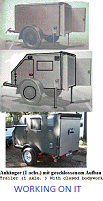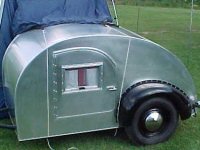Roxul insulation
5 posts
• Page 1 of 1
Re: Roxul insulation
biziedizie - I'm not answering your question, because I'm not insulating my trailer, but I have a related question for you. You stated that you use Roxul in construction, and I've seen it used on "Holmes on Homes" on DIY, but never saw it in stores (listed on Lowes online though). Is it as good as the reviews say (noise reduction, water-resistant, easier to install than fiberglass, etc.)? Is it worth paying a little more, and waiting for it to be shipped? I really hate using fiberglass (always gets on my eyes or worse -gag!- mouth, and I itch for hours). Since I've been forced to stop my trailer build to re-construct a room/ceiling with collapsed rafters (my wife says it's more important than my trailer build-ha, go figure!), I would like to try Roxul, rather than use fiberglass. I wanted to try foam board, but she and I both think Roxul a better alternative.Also: Since the room being fixed has non-standard centers (due to my repairs) ease of cutting the battens to fit is a priority. What's your opinion?
2013 HHRv "squareback/squaredrop", rugged, 4x8 TTT, 2225 lbs


- *3500 lb Dexter EZ-Lube braked axle, 3000 lb.springs, active-progressive bumpstop suspension
- *27 x 8.5-14LT AT tires (x 3) *Weight Distribution system for single-beam tongue
- *100% LED's & GFCI outlets, 3x fans, AM/FM/CD/Aux. *A/C & heat, Optima AGM, inverter & charger(s)
- *extended-run, on-board, 2500w generator *Coleman dual-fuel stove & lantern, Ikea grill, vintage skillet
- *zinc/stainless front & side racks *98"L x 6" diameter rod & reel carrier tube on roof
-

working on it - 2000 Club

- Posts: 2189
- Images: 457
- Joined: Tue Oct 04, 2011 9:05 pm
- Location: DFW Texas
Re: Roxul insulation
Do to the thickness of most teardrop walls and ceiling I would not think it warrants the extra cost. From reading many comments on this site it seems that insulation should be a small concern in a Tear. I have foam board only in the ceiling. A TT may be a different story IMO 

-

AceMan - Platinum Donating Member
- Posts: 130
- Images: 8
- Joined: Mon Dec 20, 2010 1:26 am
- Location: Chicagoland


